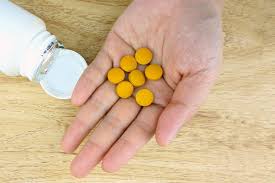Corrects mechanisms that cause increased blood pressure in the pulmonary arteries, used to treat certain forms of PAH. In pulmonary hypertension, the walls of one pulmonary artery or more have excessive tissue around them which narrows their cross sectional area and fully distended pressures. This in turn causes the right ventricle to work harder and eventually, heart failure. These medications mitigates these symptoms and leads to better outcomes by widening of the blood vessels, lowering arterial pressure and improving overall vascular perfusion.
Pulmonary Hypertension Treatments: Mechanisms of Select ClassesSeveral different classes of drugs that are used to treat pulmonary hypertension, in order to demonstrate the distinct mechanisms whereby each class works. Endothelin is a molecule that constricts blood vessels, and endothelin receptor antagonists (ERAs) block the action of this constriction complete_020. ERAs inhibit this effect and thereby reduce PA pressure, increase the ability to exercise, and delay disease progression. Sildenafil, a class of phosphodiesterase-5 (PDE-5) inhibitors operates by increasing levels of cyclic GMP thereby resulting in vasorelaxation and ultimately increased blood flow to improve erection. Several studies have confirmed that the use of PDE-5 inhibitors effectively increases exercise capacity over 4–9 weeks from baseline (p < 0.001) with mean improvement ranging between around ~12 to 22% and also consistently improves quality of life in such patients,24).
The other major class are prostacyclin analogs that mimic the effects of a natural molecule, called prostacyclin, which acts to relax blood vessels and inhibit clot formation. These drugs have resulted in improved survival and time to clinical deterioration among patients with more advanced pulmonary hypertension. In one long-term study of patients treated with prostacyclin, for example incensement in survival rates was up to 40% higher than were seen among those not getting the therapy.

The biological rationale for these drugs is that they are designed to act along specific pathways of action related to the disease. Riociguat, a stimulator of the nitric oxide pathway is another example. Riociguat directly stimulates soluble guanylate cyclase (sGC) by sensitizing it to nitric oxide, thus causing vasodilation and reduction of arterial blood pressures. This method is particularly useful for individuals with chronic thromboembolic pulmonary hypertension (CTEPH) in which surgery cannot be performed. Riociguat is now a key part of PH treatment following the evidence from clinical trials that it can increase exercise capacity and reduce pulmonary vascular resistance by 30-40 per cent.
As pulmonologist Dr. Lewis Rubin remarked, “Treating pulmonary hypertension successfully calls for addressing all of the responsible pathophysiologic pathways to gain improved control over this disease.” This concept underscores the reality of a multi-faceted approach to treating PH in that combination therapy with different classes works often better, as drug together can act upon several pathways.
However, many challenges still exist despite the progress in PH drug therapy. They are expensive- some amounting to over 100,000 a year. On the other hand, there can also be significant benefits from these drugs — they extend patient lifespan and many patients are able to have much higher levels of functioning on a day-to-day basis. In addition, work is in progress on the discovery of new drugs with less side effects and having greater effectiveness.
To read more about drug delivery mechanisms and their implications for pulmonary hypertension, check out platforms like ph drug which provide extensive information on the detailed conception and optimization behind these treatments.
In brief, PH drugs assist in the management of pulmonary hypertension through influencing key pathways responsible for increased PA pressure. By increasing vasodilation, relaxing blood vessels and thereby improving blood flow; these drugs are fundamental to the relief they provide patients with a noticeable improvement in quality of life for decades—in conjunction with prolonged survival. As reporting progressed, the pulmonary hypertension space is poised to further develop and set in place a brighter future for better patient prognosis.
